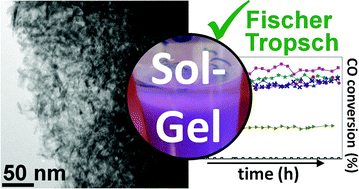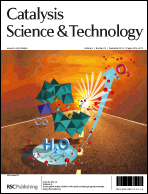Alumina-promoted cobalt and iron xerogels as catalyst for the Fischer–Tropsch synthesis
Abstract
Sol–gel chemistry offers versatile new ways to prepare catalysts with tunable compositions and in different forms of application. In particular the option to obtain catalytic coatings is of interest for microreactors or the deposition of catalysts on monolithic supports. The present study explored a sol–gel approach for Fe and Co Fischer–Tropsch catalysts based on the so-called epoxide addition method. As a support and structural promoter, respectively, alumina was added. In the case of cobalt, the role of different precursors was studied, whereas in the case of iron, varying Fe–Al2O3 ratios were investigated. In both cases, ambient drying resulted in xerogels with high specific surface areas. The performance of the xerogels as catalysts for the Fischer–Tropsch (FT) reaction was studied in a fixed bed reactor and compared to cobalt- and iron-based reference catalysts synthesized by established impregnation and precipitation methods, respectively. All catalysts were carefully characterized in the as-prepared state as well as after catalysis with respect to their reducibility, stability and the distribution of the FT active component. Our study proves the suitability of the applied sol–gel technique to prepare highly active alumina-promoted Fe as well as alumina-supported Co FT catalysts and provides insight into the structure–performance relationships of these systems.


 Please wait while we load your content...
Please wait while we load your content...